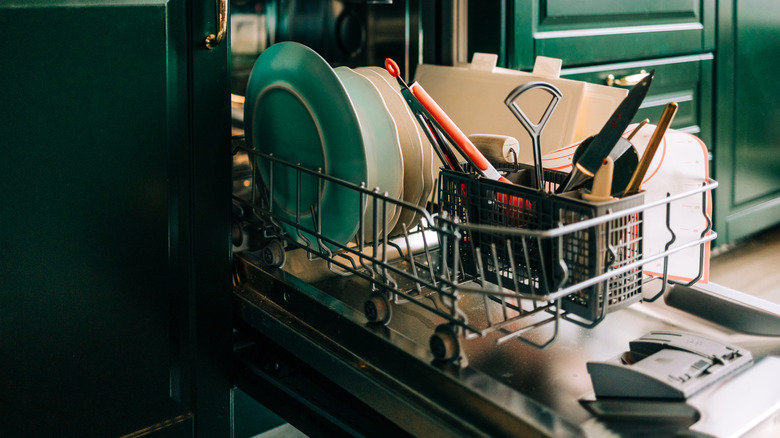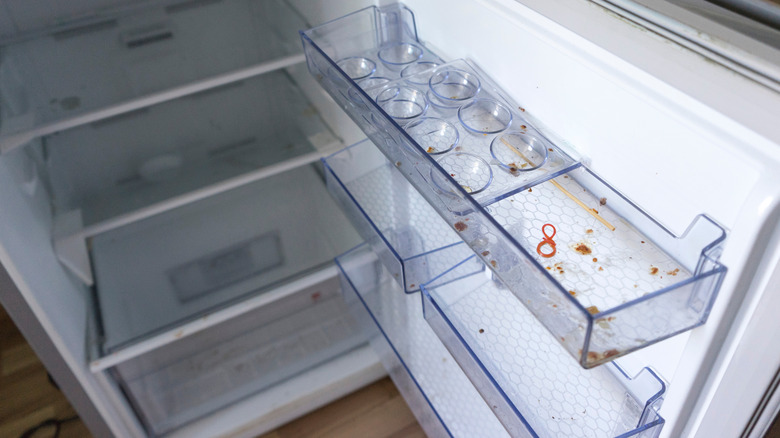How To Use Your Dishwasher To Keep Your Fridge Clean (It's So Easy)
Over time, spills, splats, and grime can build up in even the most organized refrigerators. Before you know it, the shelves that hold your food become one of the nasty parts of your fridge that need to be cleaned. No one needs to pretend that cleaning fridge shelves is fun — unless cleaning is fun for you, in which case, carry on. For the rest of us, there's a kitchen cleaning magic trick that makes this task a lot easier so you can get on with your day. Just use a bit of your free will to put the fridge shelves in your dishwasher.
Don't spend your day scrubbing off questionable smears that you've been repeatedly setting fresh food on top of. Just pop those drawers and shelves in your dishwasher, add some detergent, and take some time for yourself. Maybe you'll even find that you have the energy to defrost your freezer or clean your refrigerator coils.
Keep in mind that you should set the shelves and drawers out at room temperature for a little bit so they warm up. This will mitigate the drastic change in temperature from cold to hot in your dishwasher and help prevent warping or cracks. It is also important to note that not every refrigerator shelf or drawer is dishwasher safe. Some parts are too thin to withstand the heat, and shelving with built-in lighting is a no-go as well. If you still have the manual for your fridge (it may be taped to the back of the appliance) or if you can find it on the company website, it's worth double-checking that the pieces are indeed dishwasher-safe.
How often should you clean your fridge?
While certain parts of your refrigerator, like the handle, should be wiped down daily, the inside should be cleaned every three or four months. This timeframe will be shorter if your fridge gets a particularly quick buildup of spills and food remnants. Of course, obvious bits of cold-hardened food and sticky condiment puddles should be cleaned up as soon as you notice them. A dirty fridge interior can be a haven for the growth of mold and harmful bacteria, which can increase the risk of food-borne illnesses. There's also a risk of cross-contamination depending on what lingers on your shelves or has been long forgotten in the drawers.
Just like when you bring the shelves to room temperature before you put them in the dishwasher, it's important to do the same when you take them out. Let them cool before putting them back in the fridge. While you're waiting, take the time to go through all of the food inside as well. If you've got takeout containers that aren't dated or are from a restaurant you don't even remember eating at, you should throw those leftovers out. Get rid of anything that is expired, leaking, or showing signs of spoilage. There's no reason to put bad food back into a clean fridge.

